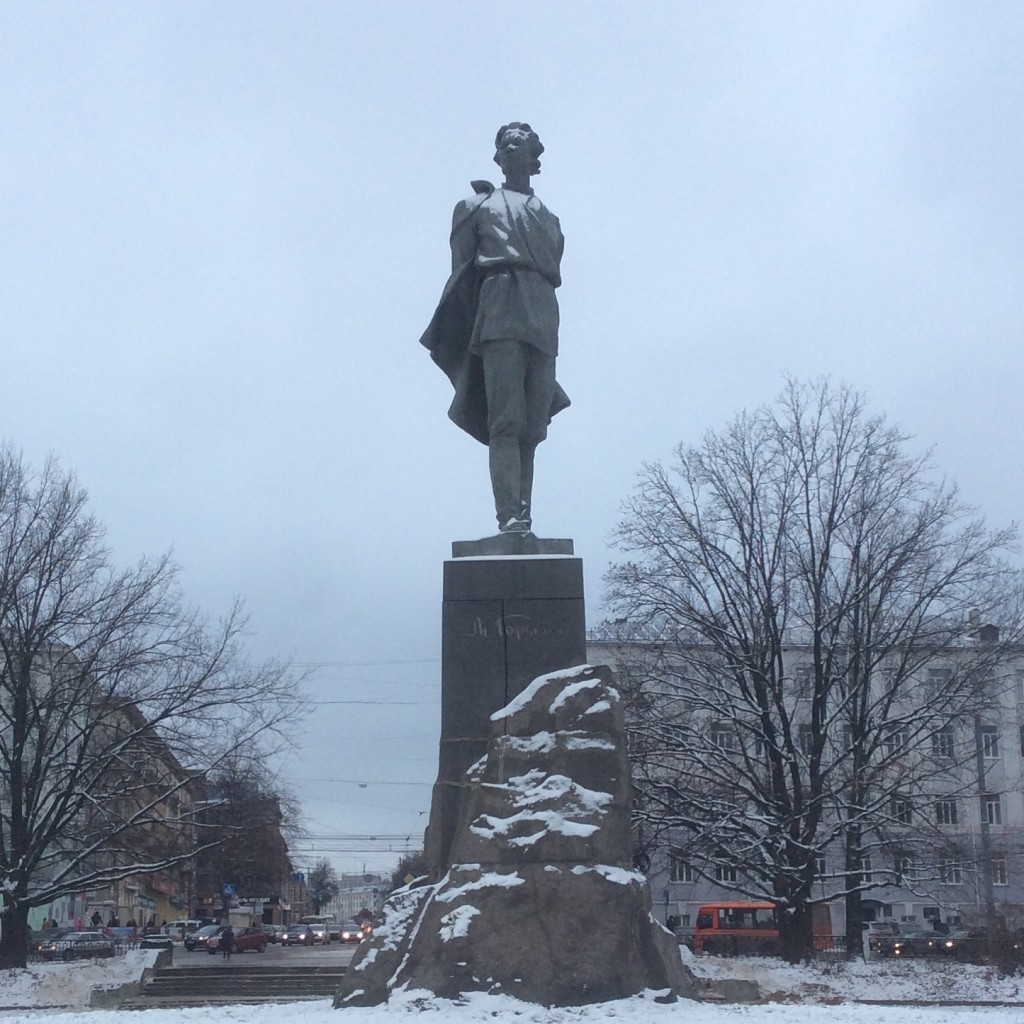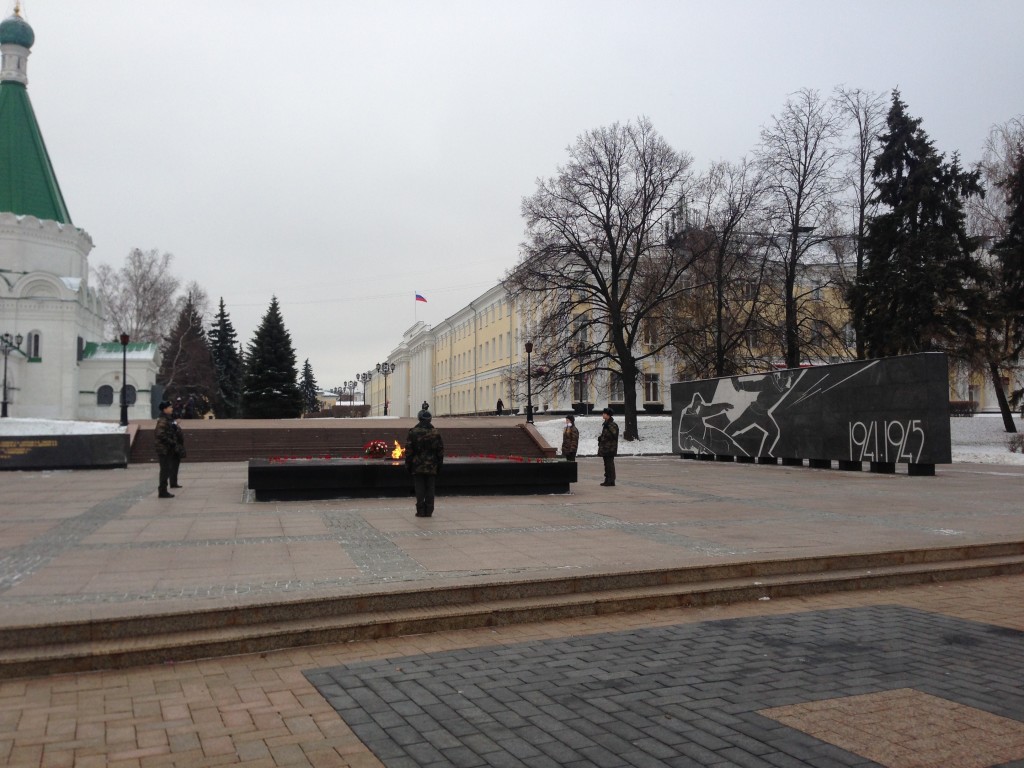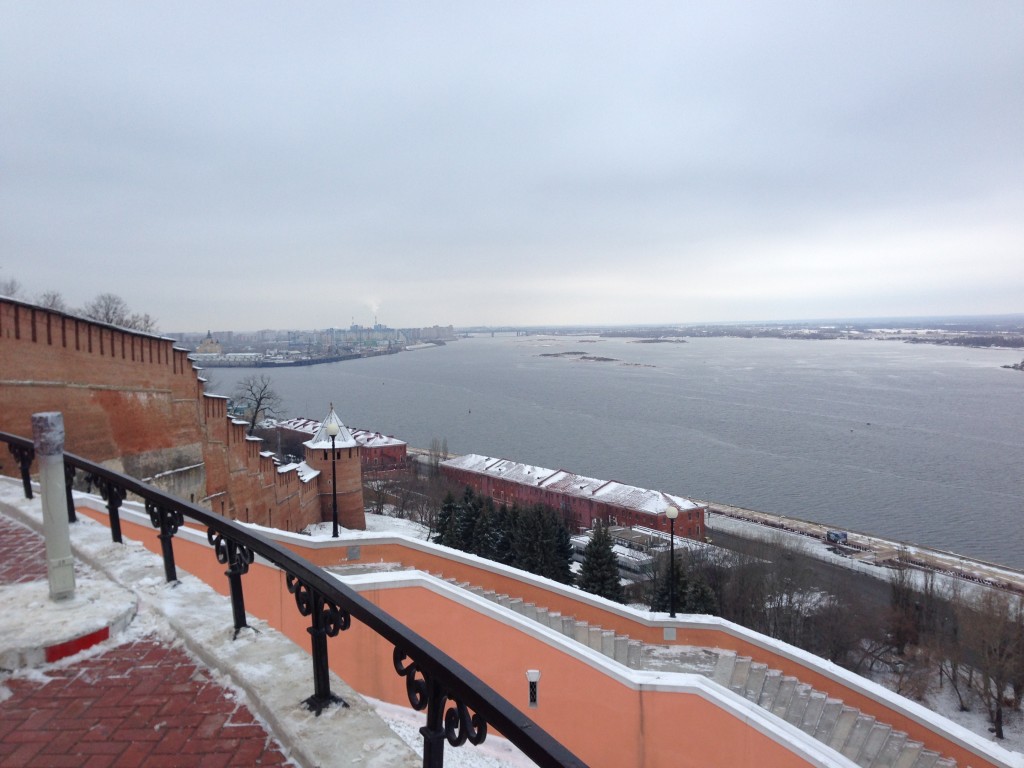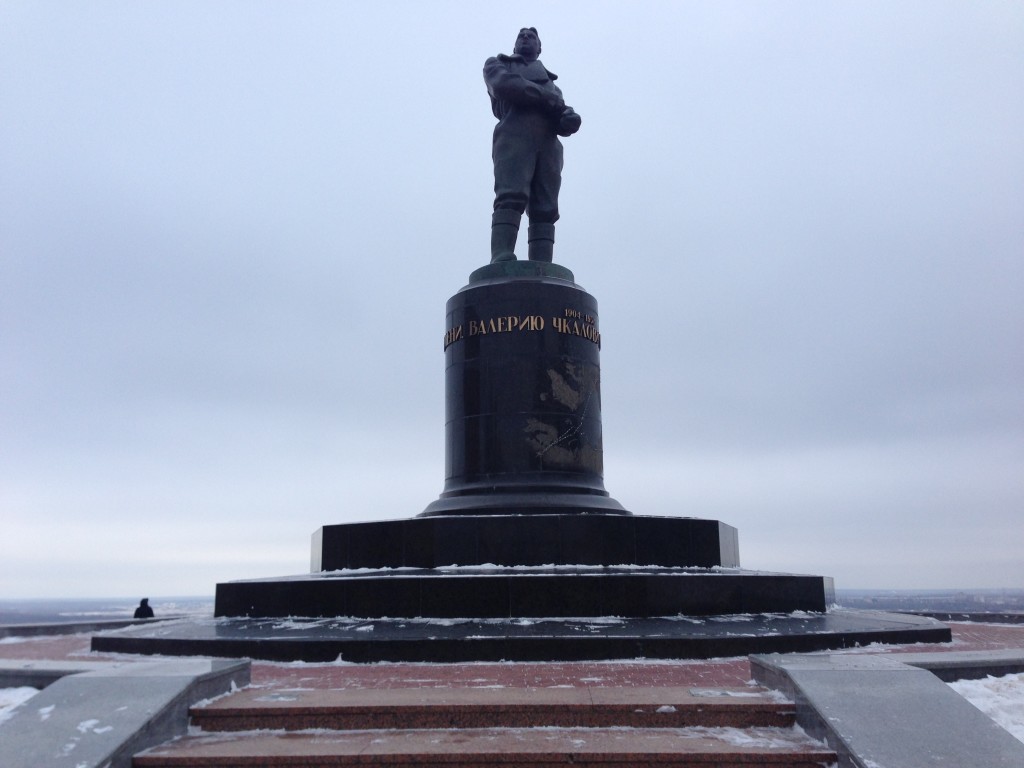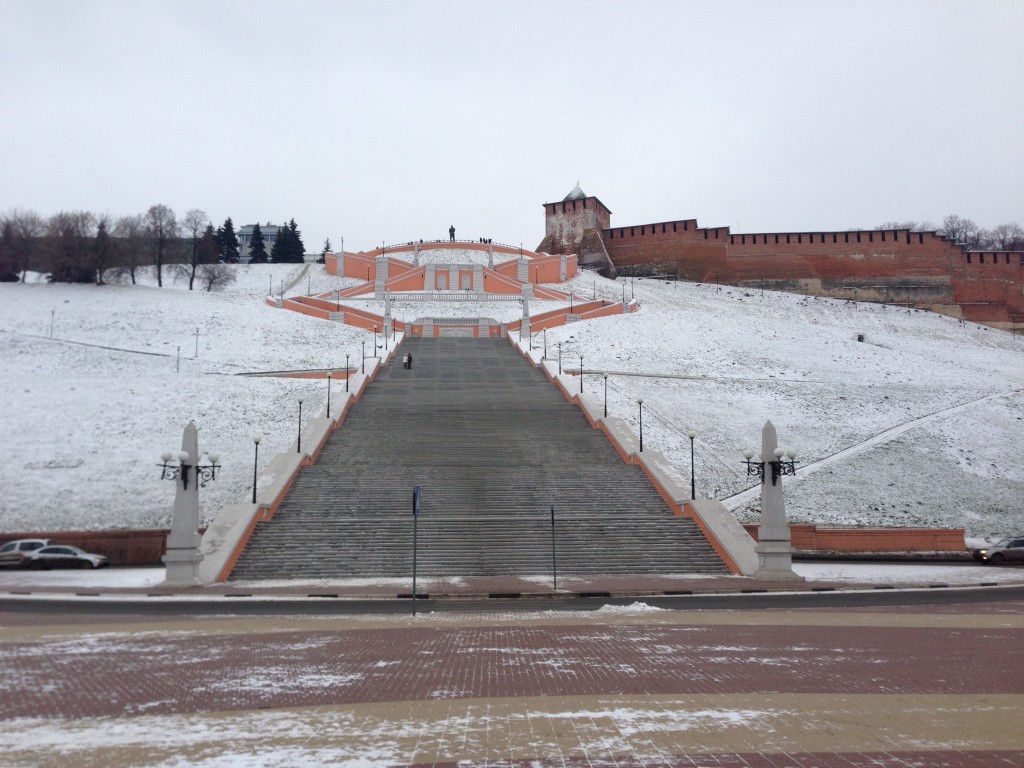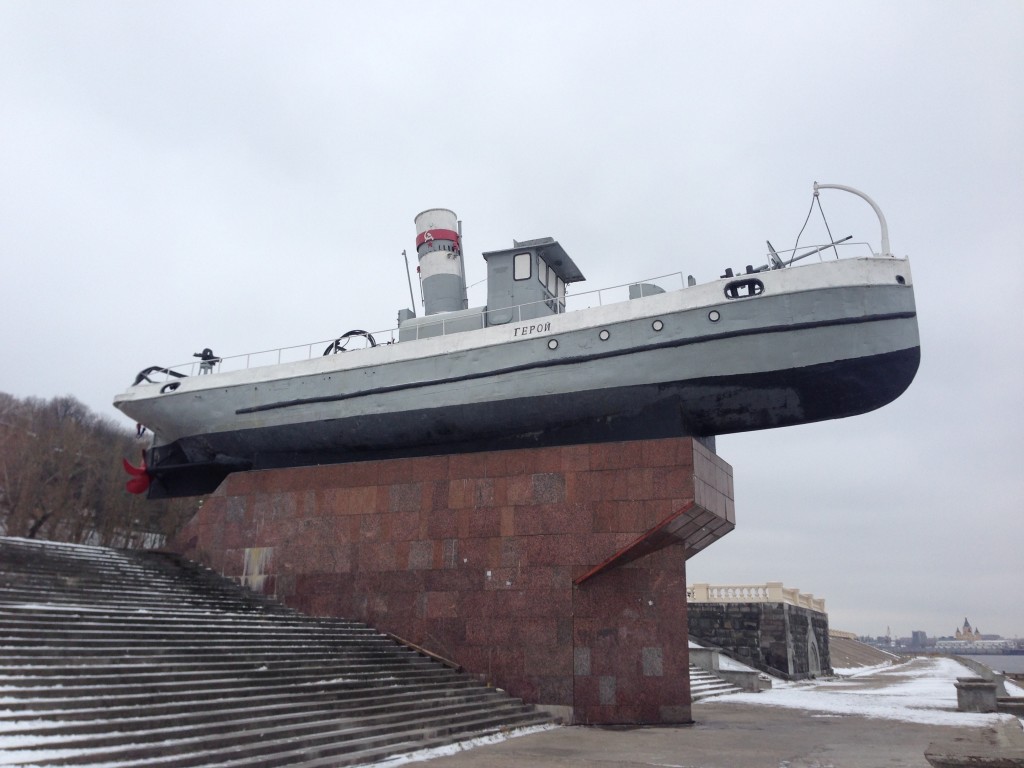Nizhny Novgorod is among the largest cities in Russia. For many decades it was known as Gorky, for the Russian Writer, Maxim Gorky. The Soviet Union deemed it a “Closed City,” meaning no foreigners were allowed to visit. This was due to military research and production that took place here. It caught me off guard to realize the lengths the Soviets would go in the name of security. In fact, the secrecy was so high here that for a time even the locals could not have street maps. Scientists that would fall out of favor were also exiled to here to keep them away from any foreign intervention.
Statue of Maxim Gorky.
The city has a unique geographic layout reminiscent of Budapest in terms of being divided by a major river. While the city is laid out alongside the banks of the Volga River, the longest river in Europe, it is divided by the Oka River into two distinct areas: the Upper City and Lower City. The city’s Kremlin sits on a hill near where the Oka River meets the Volga, giving it a great strategic location. Inside the Kremlin there are a few memorials with the main one commemorating the sacrifices made during World War II on the Eastern Front, known here as The Great Patriotic War. It is an eternal flame with an honor guard. I was struck by the age of those in the honor guard, none of which looked like they had graduated high school yet. It is great to see traditions upheld by the next generation. The view of the Volga River and Upper City here rivals JFK’s view of Washington, D.C., with a more industrial flare dotted with a few golden “onion domes” from Orthodox Cathedrals.
Eternal Flame with Honor Guard
View of the Volga River
There is also a building that goes by the name of “House of the Soviets,” which was built during the Soviet Era as an administrative building. Soviet era buildings are known for their plain, concrete designs. It almost looked absurd to find this structure resting inside the walls of an old fortress surrounded by buildings of a much older and elegant style architecture.
House of The Soviets
Nearby is the Chkalov Staircase, which has over thousand steps leading from the riverbank of the Volga to the top of the hill near where the Kremlin rests. At the top is a monument that honors Valery Chkalov. Chkalov was the first person to fly from Moscow to the United States routing through the North Pole. This was a big deal for that era and pilots were only second to Stalin in terms of honor and prestige. At the bottom of the staircase rests a mounted boat as a memorial. From what I could tell, it is a memorial to the Battle of Stalingrad.
Valery Chkalov
Hero Boat
I was fortunate to have good weather and look forward to my first overnight train leg Wednesday night into Thursday on the Trans-Siberian Railway to the city of Kazan. // Oliver – Day 65 – Russia

